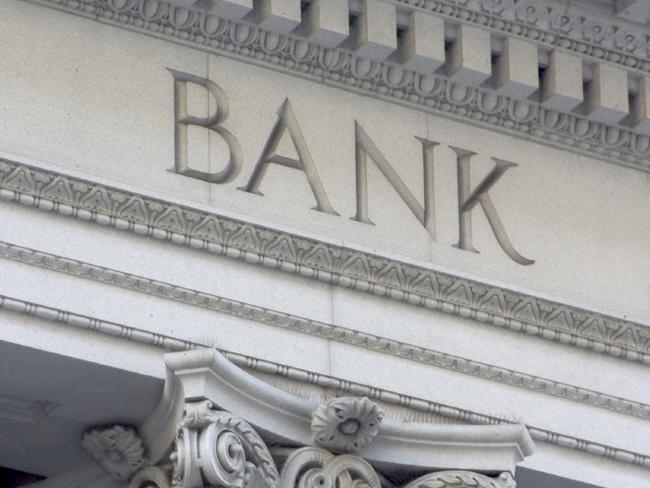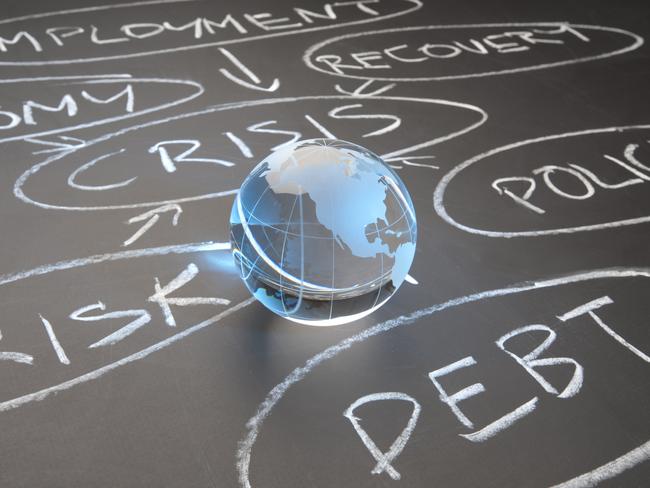What are shadow banks and could they plunge us into another GFC?
SHADOW banks don’t follow the same rules as everyone else but they control $75 trillion. Could they be responsible for another GFC?

Banking
Don't miss out on the headlines from Banking. Followed categories will be added to My News.
SHADOW banking. It has the ominous aura of loan sharks and secret accounts in the Cayman Islands.
But it’s actually a perfectly legal money lending system that controls over $75 trillion in assets globally. But according to the International Monetary Fund, shadow banking increasingly poses a risk to global financial stability. And the system was a significant contributor to the Global Financial Crisis.
Shadow banking refers to a system of lending money by institutions that aren’t banks. Typically, these include investment funds, mutual funds and hedge funds. But these institutions, or shadow banks, aren’t regulated or governed like formal banks.
Shadow banks don’t take ‘deposits’ from individuals, which is one of the reasons why they’re outside of the regulatory banking network. And they usually deal with bigger amounts of money to fund things like corporate deals, infrastructure and more, rather than your car loan.
University of New South Wales’ director of the Institute of Global Finance, Professor Fariborz Moshirian, told news.com.au that shadow banking is loosely defined as anyone who has money that can lend money to another party without regulation or supervision.
“They key issue around shadow banking is due to the fact that we are putting more pressure on actual banks to be more prudent in their lending,” Professor Moshirian said. “Unwittingly, that has led to the expansion of the non-banking sector.”

Shadow banks have grown larger in the extremely low interest-rate environment of the past six years, as investors seek higher returns on their money and banks tighten up under tougher post-crisis regulation.
But an IMF report says the risks are high because shadow banking largely depends on short-term funding. In a scare, it says, the impact of panic withdrawals can snowball into the broader financial system and global economy with outsized impact.
That was seen in the financial crisis in 2008, when US money market funds that were important lenders in Europe faced large redemptions, and with the near-collapse of companies like insurer AIG. Since the crisis, the power of shadow banks has only grown, the IMF report notes.
“If shadow banks withdraw their funds from the market, it could create more uncertainty to the global economy,” Professor Moshirian said.
The potential problem with shadow banks is their opaqueness. Regulators and central banks don’t know for certain exactly how much money they control. Gaston Gelos, chief of the Global Financial Analysis Division at the IMF this week estimated it was worth more than $75 trillion. In 2012, the Bank of England’s Financial Stability Board put it at about $67 trillion. To put that into perspective, it’s roughly the GDP of the whole world.

In the US, shadow banks account for more than half the market share of overall lending. In Australia, it’s less. In 2010, the Reserve Bank put the figure at 20 per cent. Additionally, Australia doesn’t have all of the same shadow banks, such as the money market funds that plagued the US in the lead-up to the GFC. This is one of the reasons why the GFC wasn’t as hard hit on Australia as the rest of the world.
What regulators around the world want is transparency.
Professor Moshirian said the ramifications of shadow banks withdrawing their funds from the global marketplace are why the IMF concerned. He said: “We need to have access to the activity [of shadow banks]. In a highly globalised economy, central banks need to have access to both banks and non-banks. If shadow banks withdraw their money, it’s like draining half a city’s water supply. It will create systemic risk.”
Mr Gelos said: “It’s very important to understand what’s going on there to be able to assess risks.”
Australia also wants the issue of shadow banking to be on the agenda at the G20 Summit in Brisbane.
Professor Moshirian said he has no doubt that shadow banking will be a big contributor to whatever global financial crisis may hit next.
Originally published as What are shadow banks and could they plunge us into another GFC?


